Key Takeaways
The production of silk is a complex process that requires several careful steps.
- It all begins with the rearing of the silkworm, which must be fed with mulberry leaves to enable its development.
- Once it has matured, the worm weaves its cocoon by secreting fibroin to protect itself during pupation.
- The cocoons are then harvested and immersed in hot water to allow to unwind the silk threads.
- These strands are then spun and twisted together to obtain a strong and regular thread.
- This silk thread can then be dyed to obtain different colors before weaving to make the textile.
- Finally, various finishes and finishes are carried out to give optimal properties to the silk fabric.
The French brand The Oversized Hoodie® 🇫🇷 is famous for its textile expertise, notably its collection of high-end, Oeko certified 100% natural mulberry silk products -Tex® Standard 100. Free from toxic and chemical substances, and ecological, the collections mulberry silk pillowcase, mask en silk and silk sheets stand out for their incomparable softness and excellent value for money, providing an unrivaled feeling of comfort.
Origin and history of silk
silk is one of the oldest and most valuable textile fibers in the world. It symbolizes luxury, elegance and refinement.
The origin of silk dates back to ancient China, almost 5,000 years ago. Legend has it that Empress Xi Ling Shi discovered silk thread while drinking a cup of tea under a mulberry tree. A cocoon of a silkworm would have fallen into his cup, unrolling into a long, shiny thread.
In reality, silk manufacturing was already mastered in China at that time. The secret of silk was so well guarded that the Silk Road was created in part to ensure its exclusive transport to the West.
At The Oversized Hoodie®, we are passionate about natural materials and their secrets. Silk fascinates us with its thousand-year-old history and its exceptional qualities. As Cristóbal Balenciaga, famous Spanish fashion designer, said so well: “Silk does more for a woman than any paint. It is the most beautiful work of art imaginable.”
— Geoffrey, Founder of The Oversized Hoodie®
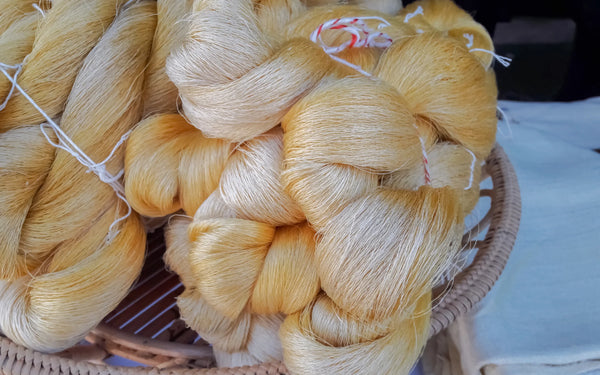
Also read: Which country invented silk ?
The caterpillar, the main player in manufacturing
The caterpillar of the silkworm weaves a very resistant cocoon to begin its metamorphosis. This cocoon is made of silk thread approximately 1,000 m long! The silk cocoon represents the raw material for the manufacture of textiles.
The process of making silk
Silk manufacturing includes 6 meticulous steps:
1. Silkworm breeding
Silkworm breeding, also called sericulture, begins by obtaining silkworm eggs, called seeds.These seeds are carefully selected to obtain the best breeds of silkworms. The eggs hatch after 10 days and the larvae are then fed with mulberry leaves.
Silkworms go through several larval stages and molt 4 times as they grow. After 3 to 8 weeks, when they reach 5 to 10 cm, they are ready to spin their cocoon. At this stage, they must be transferred to supports suitable for making the cocoon.
2. Making the cocoon
Once they have finished growing, silkworms spin a cocoon around themselves. They secrete long threads of silk which they wind into a spiral to create protection.
It takes between 2 and 4 days to make the cocoon. The cocoon is made of a continuous thread approximately 1,000 m long. Once the cocoon is complete, the larva pupates inside to transform into a chrysalis before the butterfly emerges.
3. Unwinding and spinning
Once the cocoons have been harvested, they must be unwound to obtain continuous silk threads. In traditional spinning mills, unwinding is done by hand.
The cocoons are immersed in hot water to soften the sericin, the gummy substance that keeps the threads stuck together. The threads are then unwound and brought together to form a continuous thread.
Several threads are then twisted together to obtain a stronger and more regular thread which can be woven. This operation is called spinning.
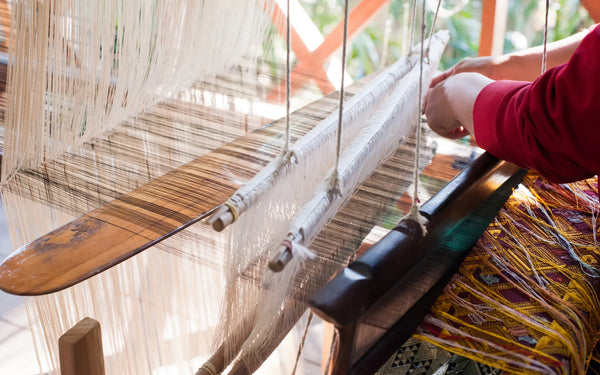
Also read: Where silk grows ?
4. Weaving
Once the silk threads are spun, they can be woven. Weaving allows you to create a fabric from the threads thanks to the regular interweaving of the warp thread and the weft thread.
On a loom, the warp thread is stretched longitudinally. The weft thread is passed across at a right angle. The crossing of the threads forms the pattern of the fabric, the regularity of which gives the textile its strength.
There are different more or less complex weaving techniques to obtain various effects (shaped, brocades, etc.).
5. Dyeing
Before or after weaving, silk threads can be dyed to obtain different colors.
Silk is easily dyed thanks to its absorbent properties. Many natural dyes such as indigo or madder were traditionally used. Today, chemical dyes make it possible to obtain a wide variety of shades.
Dyeing silk requires specific know-how. The regularity of the color and its durability over time are important criteria for the use of the textile.
6. Finishes
Once the silk fabric is obtained, various finishing operations can be carried out such as:
-
Finishing, which consists of chemical treatments to improve certain properties of the fabric (waterproofing, dimensional stability, etc.).
-
Digging, which removes the sericin remaining on the fibers.
-
Calendering, which gives a shiny appearance to the fabric by passing it between rollers.
-
Making, last step to obtain a finished product (clothing, accessory, etc.).
These steps make it possible to obtain a product with optimal qualities meeting the use for which it is intended.
Each step requires great artisanal know-how. In particular, unwinding consists of carefully unwinding the silk thread from the cocoon without breaking it.
Also read: How do worms produce silk ?
Silk: a natural and animal fiber
Contrary to popular belief, silk is a fiber of natural and animal origin.
It comes directly from the insect which is the silkworm. The silk fiber is secreted by the salivary glands of the caterpillar to build its cocoon.
Silk is therefore a protein of animal origin, like wool or cashmere. But its particular structure makes it a fiber with unique qualities.
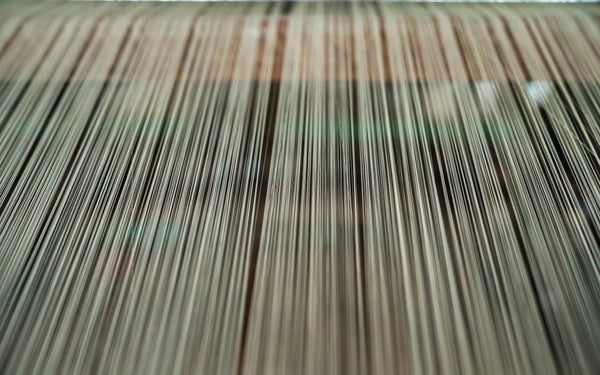
Also read: Where the silkworm lives ?
The different types of silk
There are different types of silk, which vary depending on the method of rearing the worms and processing the cocoons:
- The mulberry silk, the queen of silks
- raw silk comes from unreeled cocoons
- Wild silk comes from silkworms raised outdoors
- tussah silk is a wild silk
- Silk ecru is not bleached
- The silk dyed has received dye treatments
Depending on the type, silk will have different characteristics in terms of color, texture, feel and drape.
Also read: What are the different types of silk ?
Silk as a raw material
As a raw material, silk has remarkable qualities:
- Extremely soft texture
- Great tensile strength
- Strong moisture absorption
- thermo-regulating and comfortable properties
- Brilliant natural and shimmering reflections
- Easy dyeing for many vibrant colors
These characteristics make it a textile of choice for haute couture and luxury fashion.
With our products made from natural mulberry silk of the best grade in the world (6A), we seek to provide the ultimate feeling of well-being. Its soft and shiny fibers envelop the skin in a silky caress, for absolute comfort
— Geoffrey, Founder of The Oversized Hoodie®
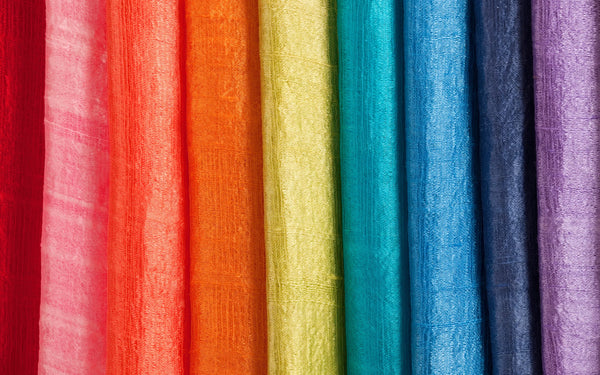
Also read: Where is silk produced in France ?
How is silk fabric made ?
From silk threads, silk fabric is made on specialized looms.
The most common weaving weaves are taffeta, crepe, flaw or brocade. But there is a wide variety of possible patterns.
The warp and weft threads intertwine with precision to form the fabric, whose fineness and regularity will determine the quality.
Also read: Advantages and Disadvantages of Silk: Tour d'Horizon
Price and value of silk on the market
Due to its rarity and the artisanal skills required for its manufacture, silk has always had a very high market value.
In the 18th century, it was sold at the same price as gold! Today, the price of silk depends on the type and quality. You need to count between 60 and 150 euros per meter for high quality silk.
Silk is one of the most expensive fibers in the world alongside cashmere. This is explained by the exclusive nature and luxury symbolism of this material.
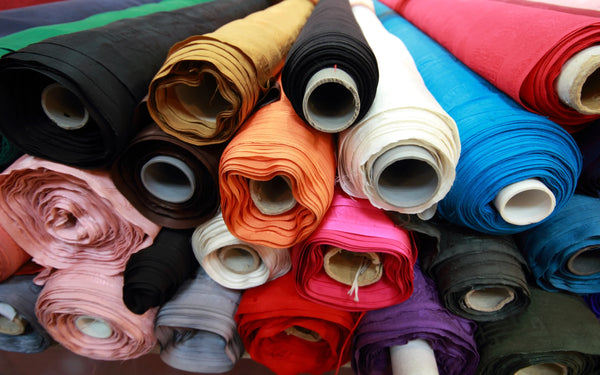
Also read: What is the name of the silkworm breeder ?
Conclusion
Silk is one of the most fascinating textiles there is. Its production from the silkworm is an ancestral process dating back nearly 5,000 years. Thanks to the Silk Road, Chinese silk spread throughout the world. Even today, China is the world's leading producer of silk.
Traditional techniques such as the laborious hand unwinding of cocoons persist to obtain high-end silk satins. But new processes appeared in the 20th century. artificial silk allows you to reproduce the appearance of silk with synthetic fibers. These modern techniques simplify production but do not reproduce all the exceptional qualities of real silk.
Despite the arrival of new textiles, silk remains very popular in haute couture, lingerie and decoration. Its aesthetic and tactile qualities make it a symbol of luxury, beauty and well-being. Wearing silk evokes refinement and voluptuousness.
| Step | Description |
|---|---|
| Silkworm breeding | Fed with mulberry leaves for its development. |
| Making the cocoon | The worm weaves its cocoon by secreting fibroin. |
| Unwinding the silk threads | The cocoons are immersed in hot water to unwind the threads. |
| Spinning | The strands are spun and twisted to obtain a strong thread. |
| Dye | The silk thread is dyed to obtain different colors. |
| Weaving | The thread is woven to make the silk textile. |
| Primers and finishes | Various finishes are carried out to optimize the properties of the fabric. |
FAQ
What is silk ?
Silk is a textile made from the threads produced by the cocoon of the silkworm. It is a very fine and resistant natural fiber. Silk has many qualities such as softness, shine, lightness and the ability to absorb moisture.
Where does silk come from ?
Silk originally comes from China where its production began almost 5,000 years ago. Thanks to the Silk Road, it spread throughout Asia and then in Europe from the Middle Ages. Today, China remains the world's leading producer of silk.
How is silk made ?
The manufacture of silk includes different stages: breeding the silkworm, making the cocoon, unwinding and spinning to obtain the thread, weaving to make the textile, as well as various dyeing and dyeing operations. finishing. It is a long and meticulous process.
Is silk a natural material ?
Yes, silk is indeed a material of 100% natural origin.It is one of the rare textile fibers to come from the animal world. Silk does not involve any chemical processes in its production, unlike man-made fibers like nylon. It is completely biodegradable.
However, intensive breeding of silkworms raises ethical questions about respect for animal welfare. In addition, extensive mulberry cultivation can have a negative impact on the environment.
Which animal makes silk ?
silk is produced by the silkworm, an insect of the Lepidoptera family whose cocoon is composed of a long silk thread. Only the cocoon of the Bombyx mori silkworm can be used to make silk.
What is the mulberry silkworm ?
The silkworm, called Bombyx mori, is the only insect capable of producing silk. This is the caterpillar of the moth of the mulberry tree. The silkworm feeds exclusively on leaves of white mulberry.
What is the raw material of silk ?
The raw material for silk is the thread produced by the silkworm to make its cocoon. This thread is mainly composed of fibroin, a protein secreted by the salivary glands of the silkworm. It is this continuous thread enveloping the chrysalis which is recovered and unwound to obtain the silk thread before weaving.
Updated February 22 2024







